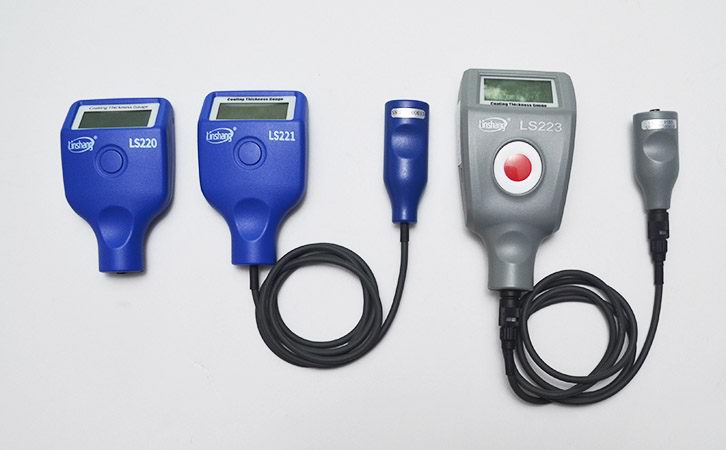Measurement Principle and Application of Paint Thickness Gauge
When we attend surface coating exhibitions, customers often ask: Can your paint thickness gauge measure the coating thickness on wood or plastic? Of course, due to the measurement principle of our paint thickness gauge, we can only tell him that it is not possible. So what kind of scenarios are common paint thickness gauges with different measuring principles suitable for? Let's take a look together below.
1.Magnetic force measurement principle
There is a certain proportional relationship between the suction force between the paint thickness gauge probe and the magnetically permeable steel. The distance between the probe and the substrate is the coating thickness. The principle of magnetic attraction measurement is made by using the difference in magnetic permeability between the coating and the substrate. As long as the difference in magnetic permeability is large enough, the instrument can measure it. Therefore, the magnetic paint thickness gauge must complete the measurement based on a magnetic material.
2.Magnetic induction measurement principle
The paint thickness gauge based on the principle of magnetic induction measurement mainly uses the probe of the magnetic flux passing through the non-ferromagnetic coating base to determine the coating thickness, so it can be determined by measuring the corresponding magnetic resistance. In simple terms, the thicker the cladding, the greater the magnetic resistance and the smaller the magnetic flux. The thinner the cladding, the smaller the magnetic resistance and the greater the magnetic flux. Linshang paint thickness gauge also uses the principle of magnetic thickness measurement, which is mainly used to measure the thickness of non-magnetic coatings on magnetic coatings. For example, the thickness of paints, powder coatings, enamels and other coatings on steel substrates.
Linshang Paint Thickness Gauges
This measuring principle can be applied to magnetic substrates. If the coating material is also magnetic, the permeability of the substrate and the coating must be sufficiently large to measure. Generally, the magnetic permeability of the substrate is required to be above 500. For example, nickel plating on steel. The Linshang paint thickness gauge also uses temperature compensation technology, which uses magnetic resistance to modulate the measurement signal to ensure measurement accuracy. Except for the above paint thickness gauges, Linshang Technology also provide LS225+F500 plating thickness gauge which is designed to test ultra-thin coating thickness below 10
3.Eddy current measurement principle
The paint thickness gauge (coating thickness gauge) based on the principle of eddy current measurement uses an AC signal to generate a magnetic field in the probe coil and forms an eddy current in it. The closer the probe is to the conductive substrate, the larger the eddy current and the further away from the conductive substrate, the smaller the eddy current. This value indicates the distance between the probe and the conductive substrate. The paint thickness gauge based on the principle of eddy current measurement is suitable for measuring the coating thickness on non-magnetic materials. Linshang coating thickness gauge using the principle of eddy current is mainly used to measure the thickness of non-conductive coatings on non-magnetic metal substrates. For example, aluminum alloy doors and windows, vehicles, home appliances, etc.
4.Ultrasonic measurement principle
The measurement principle of the ultrasonic paint thickness gauge is mainly to use pulses from an ultrasonic probe to reach the measured objects and to propagate between the measured objects. When it reaches the material interface, it is reflected back to the probe. The coating thickness is determined by the precise ultrasonic wave propagation time in the material. Ultrasonic paint thickness gauge is suitable for steel, iron, metal, plastic, ceramic, organic glass and other good conductors of ultrasound. The disadvantage of this instrument is that it is expensive and the measurement accuracy is not high. Therefore, it is rarely used in the domestic coating thickness measurement industry.
The above are the industries where paint thickness gauges with different measuring principles are applied. If you want to learn more about magnetic thickness measurement and eddy current thickness paint thickness gauge, you can consult us!
- High precision coating thickness gauge for used car
- Automotive paint protection films coating thickness gauge
- Plating Thickness Measuring Instrument for Detecting Anti-corrosion Coating
- Linshang LS220, LS191, LS160A– Necessary for Car Cover Inspection
- Coating Thickness Gauge for Second Hand Vehicle
- Zero Adjustment Step of Coating Thickness Gauge
